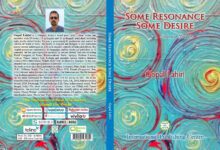Sukanya analyses “The Marvels.” and “The Hunger Games”, exclusively for Different Truths. She dives into the cosmic journey of Captain Marvel, Monica Rambeau, and Ms. Marvel in “The Marvels,” while dissecting themes of loyalty, survival, and music in “The Hunger Games.”

Act I: Setting Cosmic Foundations
“The Marvels” embarks on a cosmic journey, introducing the audience to the enigmatic Captain Marvel, the resilient Monica Rambeau, and the exuberant Kamala Khan, aka Ms. Marvel. Act I set the stage by interweaving the three heroes’ lives across different galaxies and Earth. The screenplay effectively establishes their individual struggles, desires, and connections, creating a sense of anticipation for their eventual convergence.
Through vivid cosmic landscapes and familiar Earthly landscapes, Act I unfold with intricate details, showcasing the heroes’ powers and their intertwined destinies. The screenplay beautifully captures the essence of each character, establishing their unique personalities and motivations while hinting at the imminent collision of their narratives.
However, amidst the grandeur, Act I struggles with pacing, occasionally faltering in its attempt to balance character introductions and the establishment of the cosmic conflict. The ambitious interstellar canvas sometimes overshadows the emotional depth necessary for the audience to invest fully in the heroes’ journeys.
Act II: Entwining Fates and Cosmic Tensions
As Act II unfolds, the screenplay skillfully intertwines the heroes’ paths, weaving a tapestry of cosmic complexity. It delves into the Kree-Skrull conflict, expanding the cosmic lore while simultaneously exploring the heroes’ internal conflicts. Moments of camaraderie, self-discovery, and heroism emerge, injecting the narrative with emotional resonance and dynamic character interactions.
The screenplay shines brightest in Act II’s character-driven moments, where the heroes grapple with their intertwined destinies. Brie Larson’s enigmatic portrayal of Captain Marvel, Teyonah Parris’s resilient Monica Rambeau, and Iman Vellani’s spirited Ms. Marvel create a captivating on-screen synergy. The nuanced dialogue and character interactions provide depth, breathing life into their struggles and triumphs.
However, Act II also highlights the screenplay’s weaknesses. The abundance of subplots and cosmic complexities occasionally muddle the narrative, resulting in pacing issues and tonal inconsistencies. The screenplay struggles to juggle multiple story arcs, leaving some aspects feeling underdeveloped and disconnected, hindering the narrative’s cohesion.
Act III: Resolving Cosmic Threads
In Act III, the screenplay reaches its climax, converging the heroes’ arcs in a cosmic showdown. The narrative crescendo showcases spectacular visuals and high-stakes action, culminating in moments of heroism and self-discovery. The heroes, now united in purpose, face their ultimate challenge, intertwining their powers in a cosmic symphony.
While visually striking, Act III grapples with the screenplay’s attempt to tie up the myriad threads established throughout the film. The resolution feels hurried, leaving certain plot points unresolved or hastily concluded. The screenplay’s desire to reconcile the cosmic conflict and individual character arcs results in a finale that, while thrilling, lacks the emotional depth and resonance established earlier.
***
Francis Lawrence’s “The Hunger Games: The Ballad of Songbirds & Snakes” is a captivating prequel that unfolds the intricate origins of Coriolanus Snow, decades before he ascended to the oppressive presidency of Panem. This ambitious cinematic journey, punctuated by compelling performances and a richly woven storyline, notably harnesses the power of music to navigate the tumultuous landscape of loyalty, survival, and moral ambiguity.
The narrative unfurls against the backdrop of the Capitol’s post-war desolation, introducing us to a young Coriolanus Snow, determined to resurrect the faltering Snow family’s legacy. The film intricately weaves the labyrinthine politics of Panem with Coriolanus’ reluctant role as a mentor to Lucy Gray Baird, the District 12 tribute in the tenth Hunger Games.
One of the film’s remarkable elements is the poignant integration of music into the storyline. Rachel Zegler’s entrancing portrayal of Lucy Gray Baird, amplified by her mesmerizing musical performances, serves as a narrative compass, guiding Coriolanus Snow through a labyrinth of conflicting emotions. Zegler’s haunting melodies, notably ‘The Hanging Tree’ song, resonate as emotional touchstones that evoke inspiration, rebellion, and, ultimately, tragedy.
The songs in “The Hunger Games: The Ballad of Songbirds & Snakes” act as potent vessels of storytelling, illuminating character depths and driving the emotional arcs forward. They become emblematic of Lucy Gray’s defiance and resilience, intricately woven into the fabric of her character, transcending mere musical interludes to become narrative linchpins.
Tom Blyth’s portrayal of the young Coriolanus Snow undergoes a compelling evolution, intricately interwoven with Lucy Gray’s musical journey. Their relationship, burgeoning against the backdrop of the brutal Hunger Games, finds resonance and depth through the evocative ballads and poignant melodies that echo the plight of District 12.
As the narrative navigates the treacherous terrain of the Games, the songs serve as emotional catalysts, painting a vivid canvas of hope, despair, and ultimately, tragic fate. They stand as symbols of resistance, evoking a powerful sense of solidarity and defiance against the Capitol’s oppressive regime.
“The Hunger Games: The Ballad of Songbirds & Snakes” harnesses the emotive power of music to elevate its storytelling prowess. The melodies, masterfully intertwined with the characters’ arcs, lend depth and resonance to the film’s thematic explorations, leaving an indelible mark on the fabric of the Hunger Games universe.
Picture from IMBd






 By
By
 By
By
 By
By
 By
By